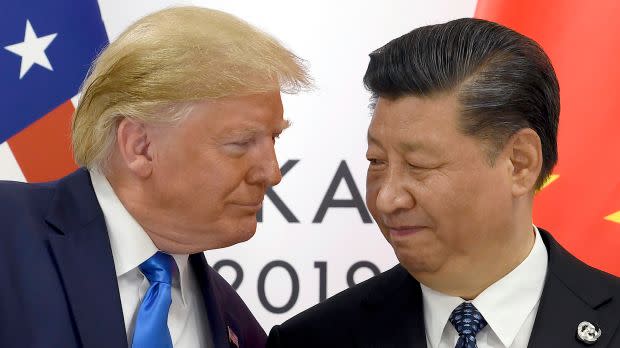What is the US getting out of Trump’s trade war with China? Not much

A deal is on the horizon to cut billions of dollars in tariffs on trade between the US and China. But it’s unlikely to achieve US president Donald Trump’s trade goals.
When Trump announced in March 2018 that he would begin asking Americans to pay new taxes on goods from China, his reasoning was straightforward: He wanted to address an “out of control” trade deficit, and a “tremendous intellectual property theft situation.”
Those tariffs have since grown to cover $550 billion worth of imports, with another round of increases set for Dec. 15. If and when a “phase 1” agreement for tariff reduction is announced next month, as some officials in both the Chinese and US government expect, neither of those two problems—unbalanced trade or intellectual property protection—are likely to change. The expected gain from this deal? Rolling back some of the trade taxes each country enacted to gain negotiating leverage.
While deescalation could set the stage for a broader agreement—along with a friendlier environment for Trump’s re-election campaign—it’s unlikely to remake the world’s most important economic relationship.
Unbalanced approach
Consider the trade deficit: Today, the difference between US imports and exports is nearly $30 billion wider than it was when Trump took office. As tariffs made trade with China more expensive, US companies have shifted their supply chains to other countries, notably Mexico, Canada and Vietnam.

As economists of many stripes have pointed out, tariffs were always unlikely to address trade imbalances that are, at heart, caused by capital flows. Because the US dollar remains the global trade currency of choice, and its debt considered among the world’s safest investable, foreign investors use dollars earned from exports to purchase not US goods, but US assets. This dynamic has been exacerbated by Chinese policies that encourage saving over consumer spending.
Being awash in foreign capital has its plusses and minuses—low interest rates and investment bubbles chief among them. Changing that situation isn’t an easy one: Proposals include re-aligning China’s economy toward consumer spending, a politically tricky transaction for the country’s leaders because it would mean slower economic growth. The US could also start taxing foreign investment—but that, too, would anger the politically influential financial sector.
Theft prevention
Long-term challenges to the international trade system and US competitiveness are why major business lobbies have tolerated Trump’s attempts to gain negotiating leverage.
US companies have complained for years about rules that force them to partner with Chinese companies if they want to invest there. Some allege that this is merely a way for their competitors to abscond with valuable intellectual property. Others complain that China does not enforce protections on IP effectively, and that it subsidizes domestic industries in ways that violate World Trade Organization rules.
These arguments formed the legal basis of Trump’s new tariffs. But within the negotiations, there is little evidence that the new taxes have convinced China that they should hurry internal reforms of its foreign investment rules or approach to industrial policy.
“I don’t think the Chinese are likely to change their system of running their economy as a part of this,” Alan Sykes, an international trade law expert at Stanford University, told Quartz.
Indeed, the trade war may lead Beijing to double-down on state-sponsored innovation. US attempts to gain leverage by blocking the export of components required by Chinese telecom companies like XTE and Huawei called attention to their dependence on American chips, and now Beijing has announced a $29 billion fund to develop its own advanced semi-conductors.
Election 2020
One product of the tariffs is clear: The US economy has grown more slowly. The International Monetary Fund’s October forecast predicts that global growth in 2020 will be the lowest since the financial crisis, and that the United States will grow more slowly in 2020 (2.1%) than it is expected in 2019 (2.4%).
Much of the focus has been on agricultural exports, particularly soy beans, which China once bought in bulk from the United States but has boycotted due to the trade conflict. The White House announced special agricultural subsidies to support US farmers, with 40% of the tariff proceeds being used to make up farmers losses. But farm income is still falling, which can’t be good news for Republicans also facing impeachment headwinds.
One recent working paper published by the National Bureau of Economic Research suggested that retaliatory tariffs cost Republican lawmakers five seats in the House during the 2018 election, when they had been in place for just a few months. Now, the tariffs reach more broadly: The next round of tariffs scheduled to go into effect on Dec. 15 focuses on consumer electronics like mobile phones and laptops, which could mean more public awareness about their costs than when the new taxes targeted bulk commodities.
The pressure on the White House to make a cosmetic deal before campaign season helps explain why Trump would agree to a tariff-reduction deal that doesn’t accomplish any of the goals he set out last year.
Sign up for the Quartz Daily Brief, our free daily newsletter with the world’s most important and interesting news.
More stories from Quartz:

